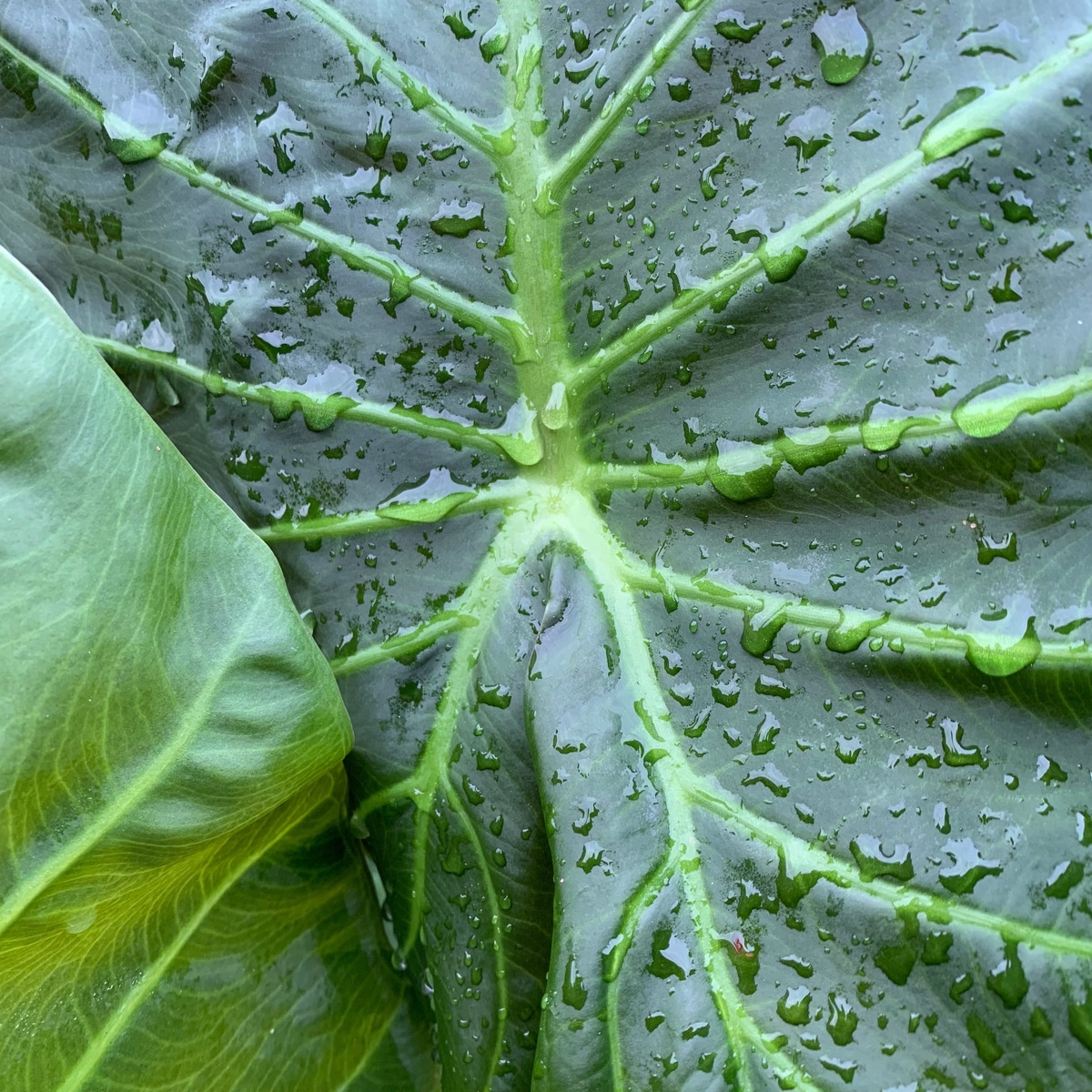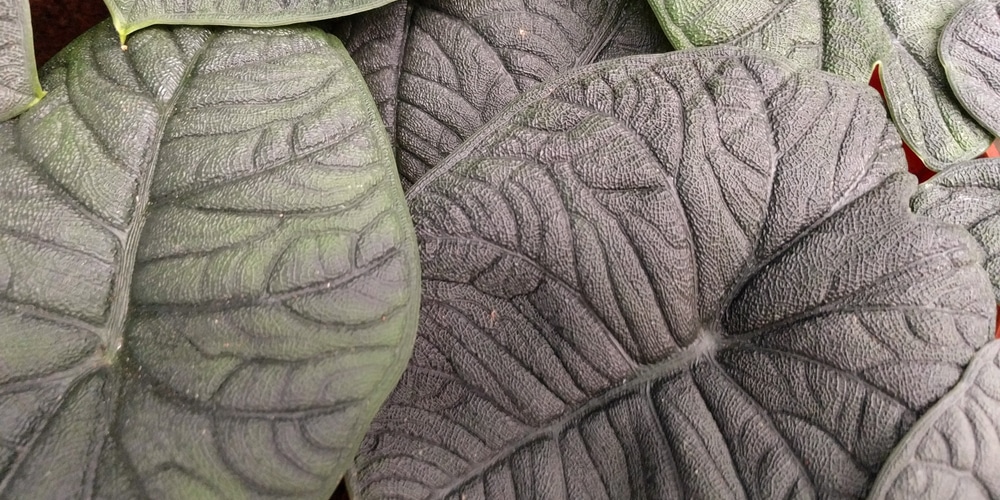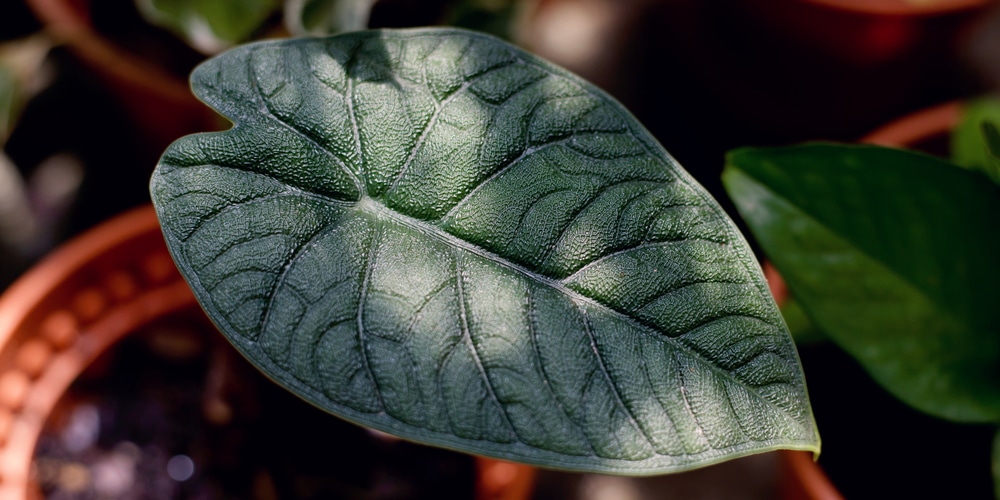Elephant ears (Colocasia esculenta and Alocasia) have a bold tropical look. You can plant them in pots or in your garden, dig out their corms, and store them anywhere you like all winter long. But some growers could prefer to grow them without soil at all.
Can elephant ears grow in water? Growing Colocasia esculenta varieties in a hydroponic system is possible. Instead, letting the plant sit in water may cause problems. Also, a young plant still needs plenty of indirect light and can only withstand 2 hours tops of morning sunlight.
How Can Elephant Ears Grow In Water?

All varieties of the Araceae family grow in clay and silty soils. So, switching to hydroponics does not change that much for them in terms of humidity and water needs.
You can either put a corm or a new plant in a hydroponic bucket basket. In brief, all the plant needs to stand is some clean clay pebbles. Once you add the nutrients and the air stone, the plant will acclimatize to the new home.
Elephant ears take a while to get started. But once they get established, they grow fast and sprout little baby plants at the bottom, just like they would in the soil.
Deep water culture works well for these plants because they are perennials. To explain, they get optimal aeration to grow for a long time. An air stone is generally enough for a single plant. But as the plant multiplies over the years, you might need to switch to air diffusers eventually.
Placing A Corm In A Hydroponic Bucket Basket
When you dig out a grown corm, you have to remove every aerial part of the plant. Only then can you store it in a dry and dark place throughout the winter. But if you want to replant it in spring using hydroponics, you need to follow these steps.
Every corm has a top and a bottom. But sometimes, a corm does not have any growth points or roots, especially when buying a new one. So, beginners may find it hard to get the orientation right once they have set up everything else.
The easy tell is the bottom, which has holes. For clarity, the holes are where the roots were before the seller or grower removed them for storage. On the opposite side, you will find the top stump. Usually, the top looks like a bullseye.
The top part also has some tiny, circular tuber sprouts. But if the corm you have is in a really bad shape and you cannot tell the top from the bottom, place it sideways. The plant will adjust.
Put clay pebbles in the container. Above all, make sure to cover the corm with about an inch of the medium. Keep the bucket in a warm place or next to a radiator. The medium should always be moist.
A corm may take several weeks to start producing new growth. So, put a lid to preserve the humidity level and check for new growth every week.
5 Tips For Growing Alocasia And Colocasia esculenta In Water
- Do not worry about the plant stretching down. In brief, elephant ears will grow leaves in every direction to figure out where the sun is. And if you want to see it grow upward, place the light source directly above the plant.
- As long as the corm has enough air, the roots growing in the reservoir are not a problem. When a plant grows in hydro, it adapts to the soilless environment. So, you can let them sit in the water.
- Different varieties and cultivars create varying amounts of salt buildup. For example, the Alocasia micholitziana Frydek builds up white cakey salt all the time. So, you might have to flush and rinse their containers periodically. A quick way to clean the buildup is by putting the basket in the sink and rinsing it until the white granules disappear.
- Keep your elephant ears at temperatures between 70 and 85F. Also, provide high humidity levels with a humidifier because these tropical plants require a humidity level above 60%. After all, they are hardy to USDA zone 10b.
- You can place your elephant ears in hydroponic planters. In passive hydroponics, these plants tend to be root bound. Repot them when they start to struggle. That is when they do not put out new growth for a while.

